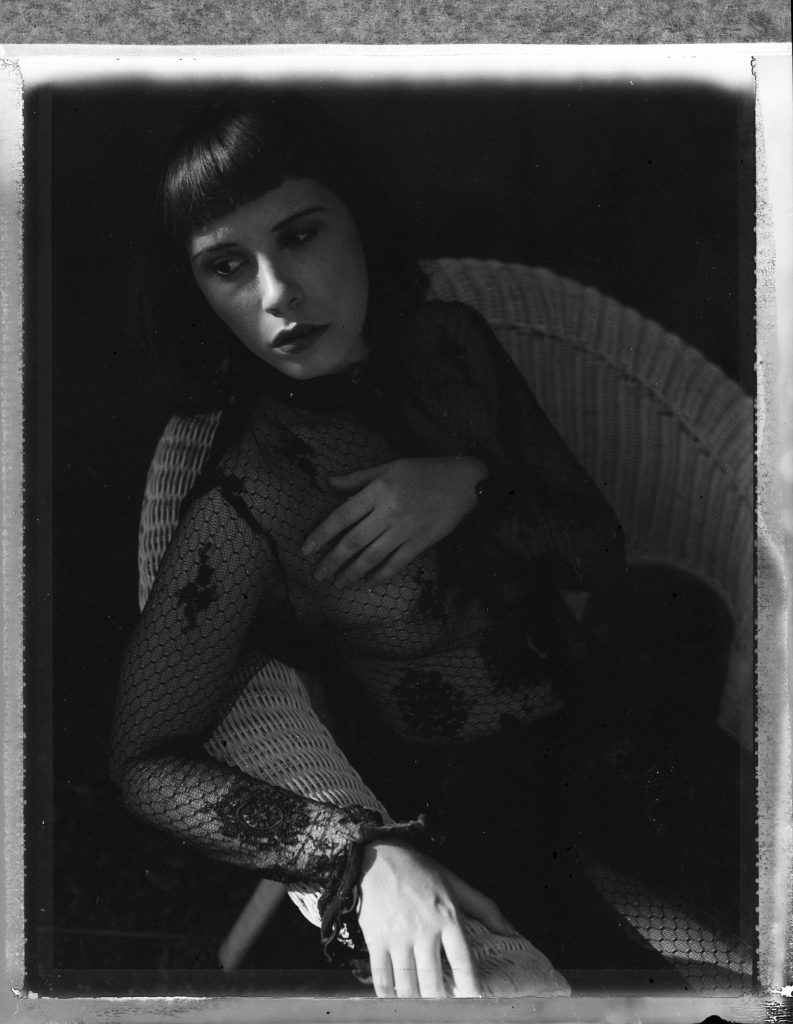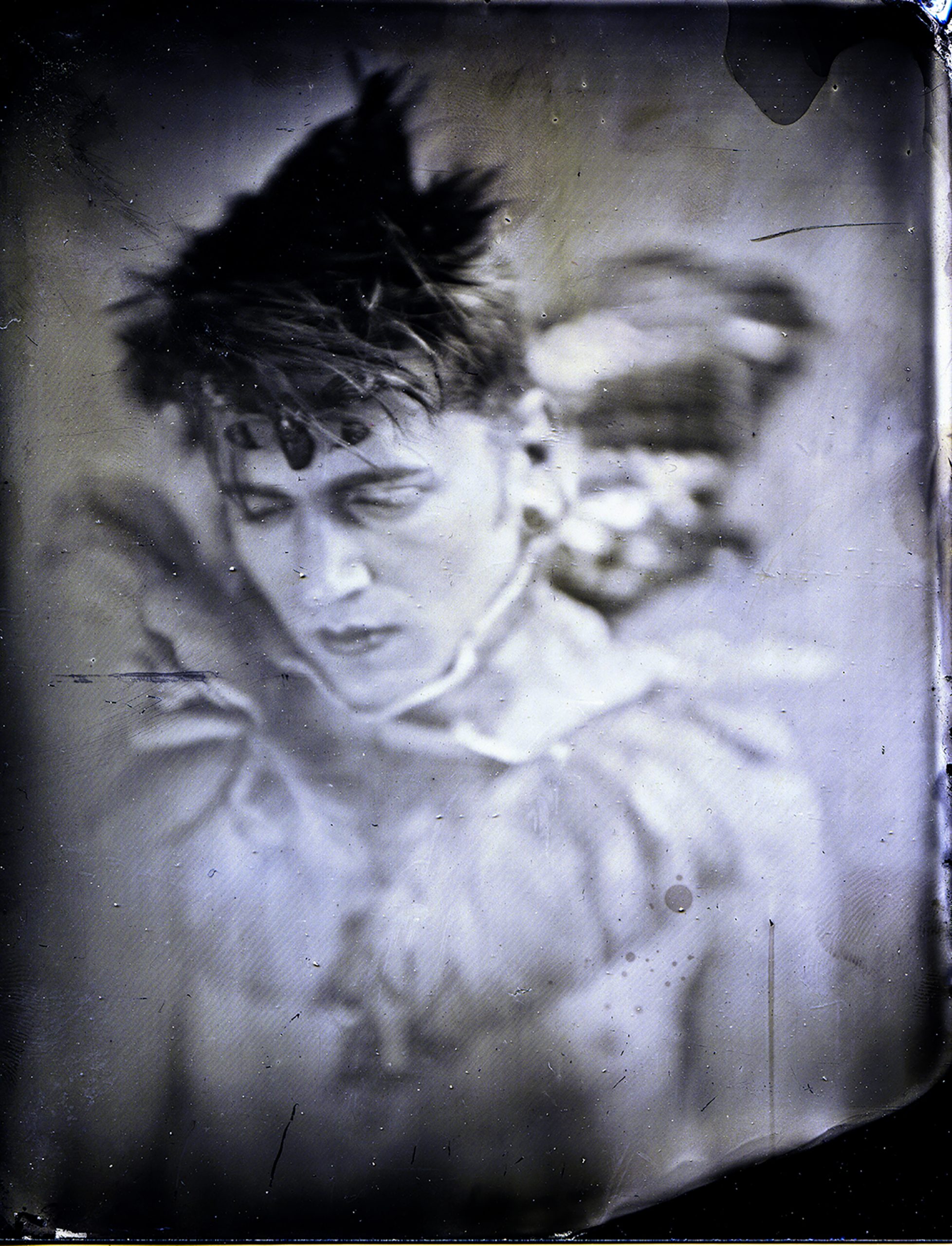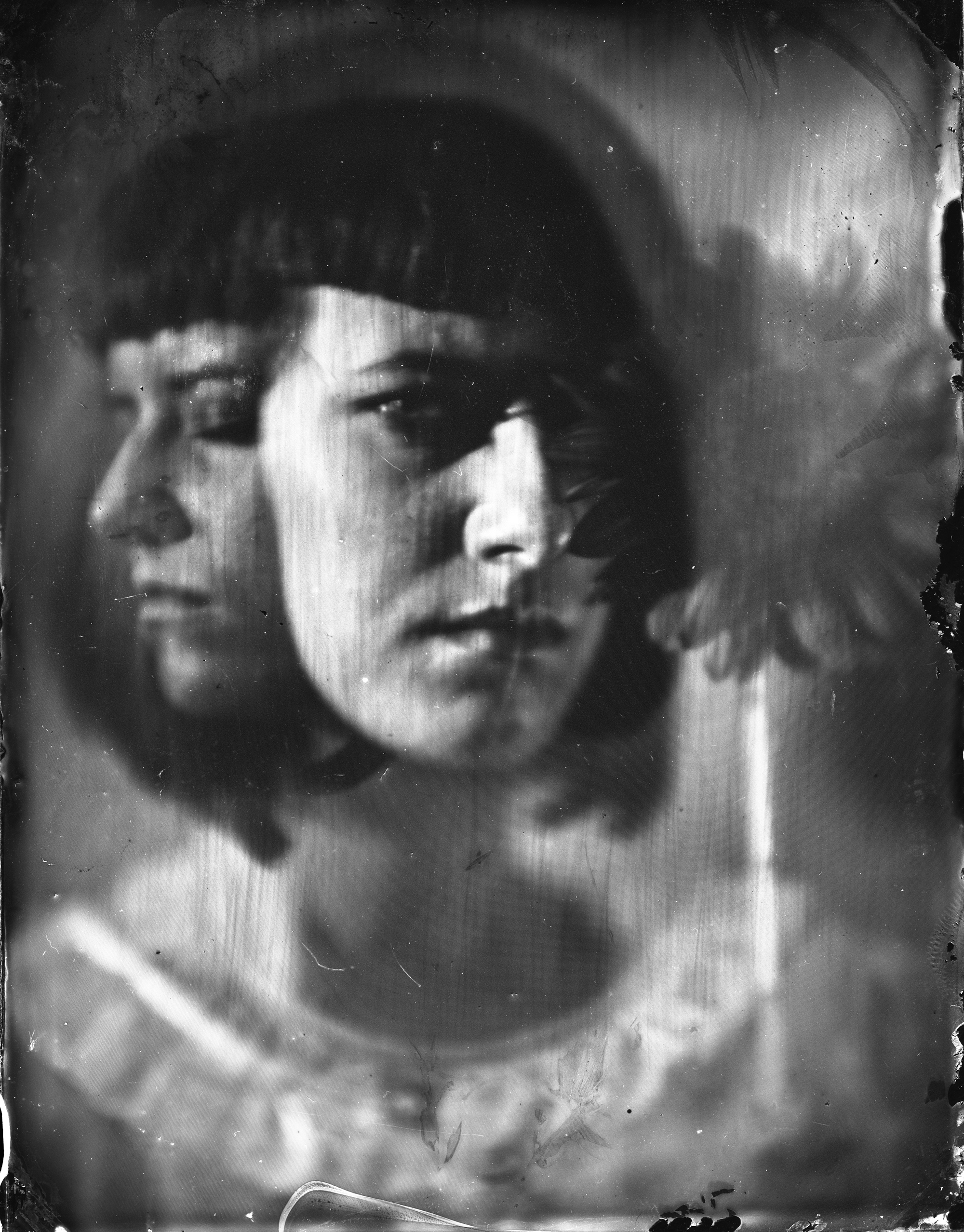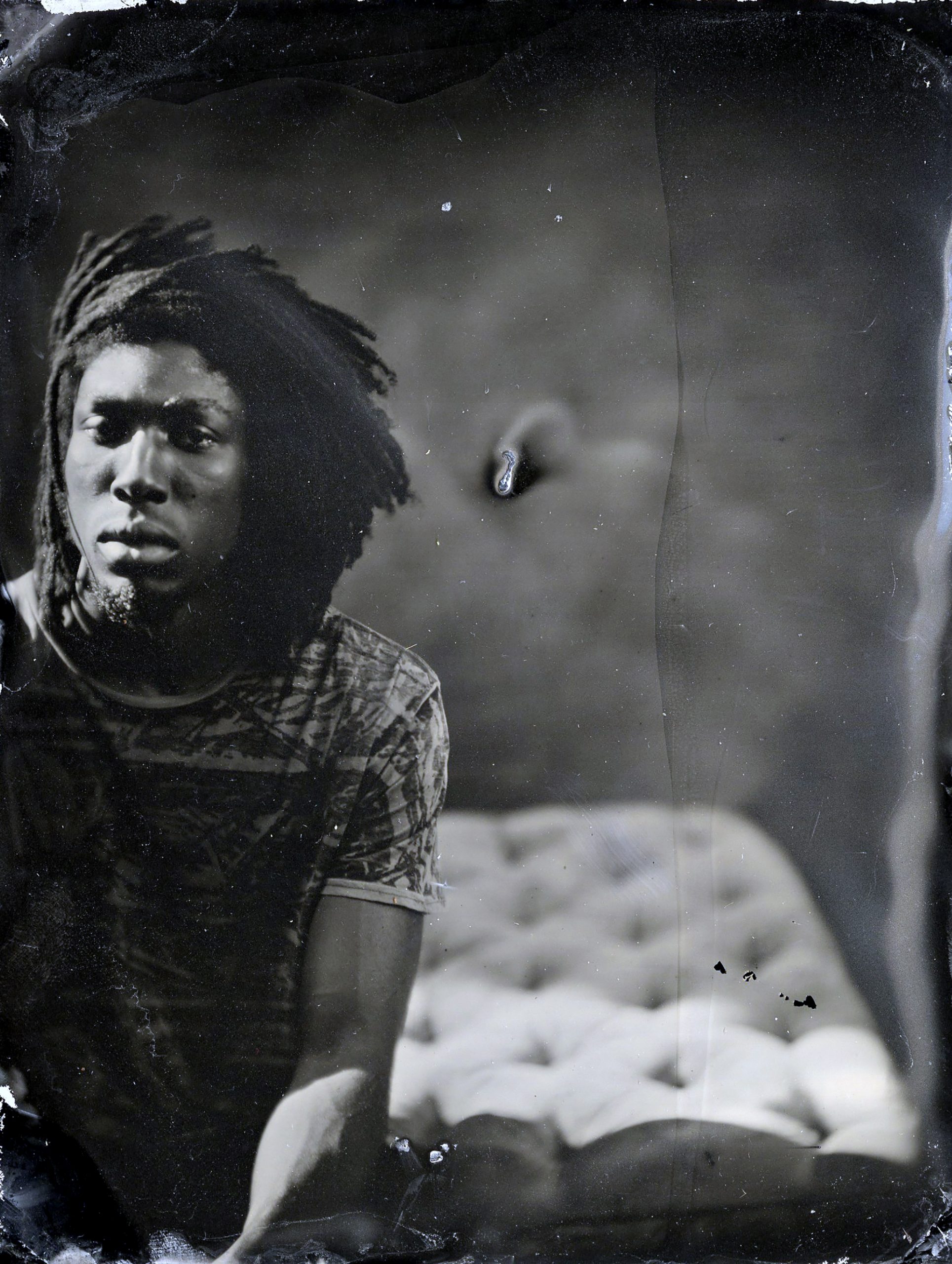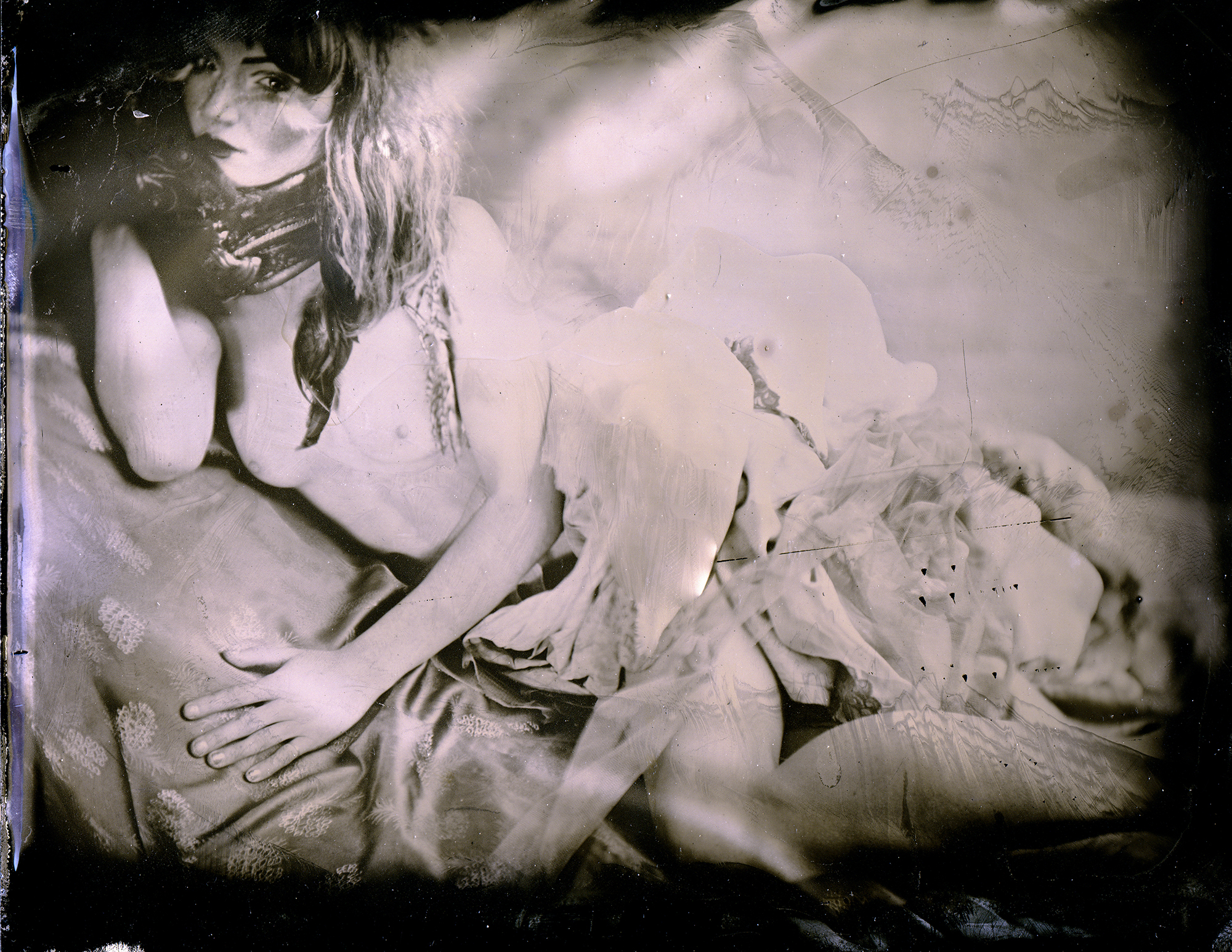Rowynn Dumont is an artist-philosopher living in Brooklyn, New York. She has an MFA in Photography: Experimental Processes, knows over 50 types of alternative photography methods and has been creating wet plate collodions since 2009. We caught up with her to discuss how she started, her creative process and why she loves it so much.
How did you get started with wet plates?
I guess the short answer to that question would be that I was looking for a mentor when I was a grad student. I saw the tintype portraits by Allan Barnes, in a hot dog gallery/cafe in DTLA. I contacted Allan and asked if he would meet with me in person. He obliged. I talked the school into letting me work with him as his studio assistant in exchange for credit. He agreed, and my apprenticeship began.
What is your process like?
Alchemy! Well, that is how it feels! I remember when Allan was first teaching me the process, you really had to pay attention. You use a combination of chemicals that can potentially be deadly/harmful. As he explained it to me, “The ether, when near flames/heat, can blow you up. The silver nitrate, if it gets into your eyes, can make you go blind. And if you mix the acid, accidentally with the cyanide, it will create an invisible, scentless gas that can kill you in 30 seconds.”
Left to right : (1) Julian Bird of Lucent Dossier (2) Rowynn’s first wet-plate. “It is a double exposure, a collaboration between Allan Barnes and myself.” Model: Niko Sonnberger (3) Valentine (4) Maggie Lally of Lucent Dossier
Is collaboration part of your process? And if so, how?
When Allan and I worked together, there was defiantly a significant collaboration process. It involved not just him and myself, but the entire orchestration with the models and designers. In my own personal work, I consider everything I do a collaboration. Especially when it comes to portraits. In conceiving a photograph, it is something that is developed in a sort of partnership between creator and subject.
What kind of mistakes did you make at first and how did you learn from them?
Wet plate, as with all alternative / experimental processes generally embrace imperfection. If you want something to appear to be “picture perfect” in a more generalized way, you are a digital photographer. Alt photographers, strive for the most beautiful accidents. Just be careful not to blow yourself up in the process… ha!
